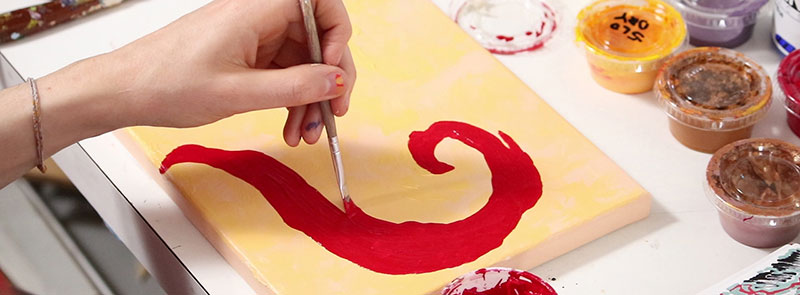Prompt
- Portray an experience you had when you were 11-13 years old.
Examples
Time Period
- Showing the time period when you were 11-13 years old can tremendously enhance the narrative.
- Examples: consider how important the time period is in shows like Stranger Things (1980s) and Mad Men. (1960s)
- Get as specific as you can: props, clothing, furniture, cars, even hairstyles all communicate a specific time period. Example: phones looked very different compared to the 1970s!
Environment
- Think about the environment where you had the experience, was it at school? At home? At a friend’s home?
- Don’t be afraid to let the background take up a large portion of the artwork.
- Backgrounds can be just as important as what the people are doing in communicating your story.

Point of view
- In your compositions, ask yourself what the point of view is.
- Point of view portrays who we are in the scene, can establish mood, and is also more visually dynamic to look at.
- Watch our explanation of point of view.
Examples of point of view
In this comic below, the point of view is what most people typically default to: a straight on view at eye level. All 3 panels are very similar looking which is less visually engaging.

This example has a different point of view in each panel. The point of view in the second panel is looking upwards at an angle. The third panel is dramatically zoomed in on the hands.

Examples
Cat Huang, Kaining Wang, Skye Ray, Joy Liu, Cat’s middle school comic
brainstorming & Sketching
- Create mood boards.
- Brainstorm with key words, image searches, mind maps, etc.
- Draw at least 6 thumbnail sketches.
Reference photos
- Consider using reference photos.
- Use our free reference photo collection.
- Our photos are free to use as long as you credit Art Prof when posting your artwork. More info on permissions is here.
art media & format
- Use any art media, 2D and/or 3D.
- You might consider a format that allows for multiple images in a single artwork: a triptych, a 4 panel comic, etc.
Why Your Art Needs a Background
Do you rationalize to yourself why your artwork doesn’t need a background? Time to stop making excuses and see the immense potential that backgrounds can have on your artwork, regardless of the media you work in.
Backgrounds are not just visually rich and dynamic, but they contribute tremendously toward communicating a narrative, atmosphere or tone to your artwork, they are a powerful tool you don’t want to skip on! Discussion wi
th Art Prof Clara Lieu and Teaching Artists Cat Huang and Deepti Menon.
How to Draw Buildings & Architecture
Watch this drawing demo and get concrete tips for how to approach drawing a building. This video shows you how to get started sketching architecture. A complicated subject with many details that can be intimidating.
Techniques for how to capture the scale of buildings as well as how to articulate details are thoroughly explained.
Demo by Art Prof Clara Lieu and Teaching Artist Cat Huang.






















